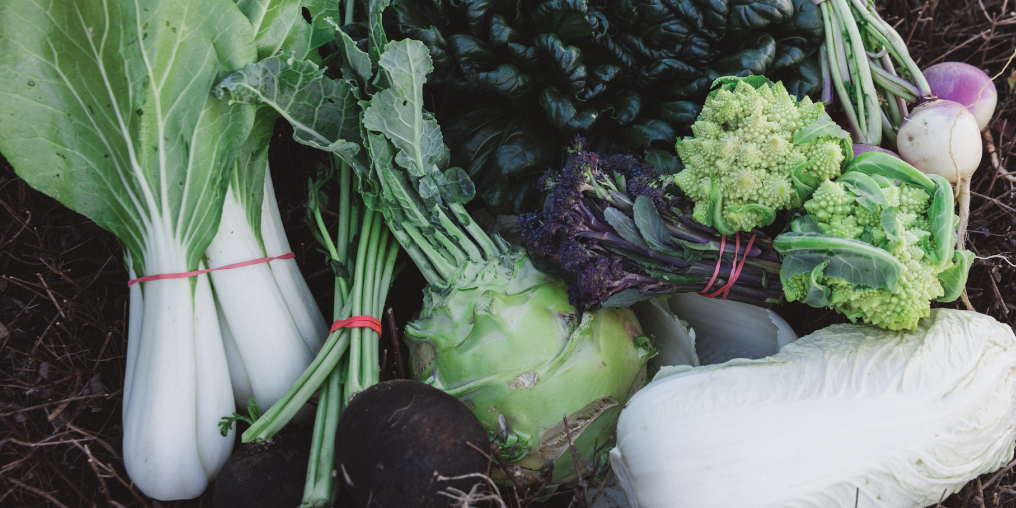No vegetable family is as diverse and versatile as the brassicas. While you may not know the word, you’re certainly familiar with them. From your everyday broccoli to the peculiar daikon (and even mustard), brassicas’ role in cuisines around the world is significant and delectable.
In the Comox Valley, we’re fortunate to have a growing environment favourable for a grand array of fantastic brassicas. That’s something worth celebrating.
If you want to eat locally 12 months of the year in our climate, you must rely on the brassicas to get through the cold months. Sure, you can hoard winter squash, make tomato sauce, and freeze a variety of vegetables throughout the growing season, but many homes lack root cellars and freezer space can be limited. When it comes to eating locally, season extension is crucial. It’s a good thing we can pull brassicas from the garden in the depths of winter and the lean days of early spring.
Walk through a garden plot in the winter, and much of what you see still living is in this family, like spindly kale stalks with tufts of leaves at their tops (looking like mini palm trees) and gnarly, knobby kohlrabi—split, perhaps, but absolutely delicious. Cabbage might be in there, too, or perhaps just the stem from a previously harvested head—dormant, but not dead. Assuming they’re free from slime and look relatively healthy, these vegetables are actually at a culinary peak of sorts. Brassicas love a bit of cold to bring out their finest sugars.
If you don’t grow vegetables, fear not: Comox Valley farmers have your back. Farmers LOVE growing brassicas because they’re reliable and fast-growing, and their wonderful range of shapes and sizes displays well. This valley is home to some striking varieties!
While kale feels like the backbone of our farmers’ market, and both Japanese salad turnips and kohlrabi are proven winners, it’s great to see an increasing number of farms providing us with beautiful staple varieties like cauliflower and cabbage.
But there are so many more brassicas to discover. Lately I’ve been excited to see an increasingly colourful array of brassica roots like purple daikon, crimson queen turnip, and black Spanish radish. I recommend snacking on these juicy roots raw to get a sense of their original flavour. You can also make amazing quick pickles out of them: immerse thin slices in a mixture of hot vinegar, sugar, and salt, then let the flavours mingle for at least a day. These snappy delights will happily find their place inside a sandwich or atop a rice bowl.
With a bit of luck, many brassicas will survive winter and send out delicious flowering shoots in the spring. These are criminally underrated and one of the tastiest manifestations of this family. Eat the sweet shoots raw, or char and toss them with chili and garlic—dinner has practically made itself. When the shoots have established little flowers and become too tough to eat, leave them for the pollinators, as new brassicas will arrive soon.
The first garden feasts of spring are dominated by brassicas like mizuna and mustard, beautiful rosettes of tatsoi, plump bok choy, the first stalks of gai lan, and a precocious radish or two. These crops are fresh, vibrant, and ready to carry the torch of local eating from last year’s sprouting broccoli. That’s the beautiful thing about brassicas: they’re always here for us.

